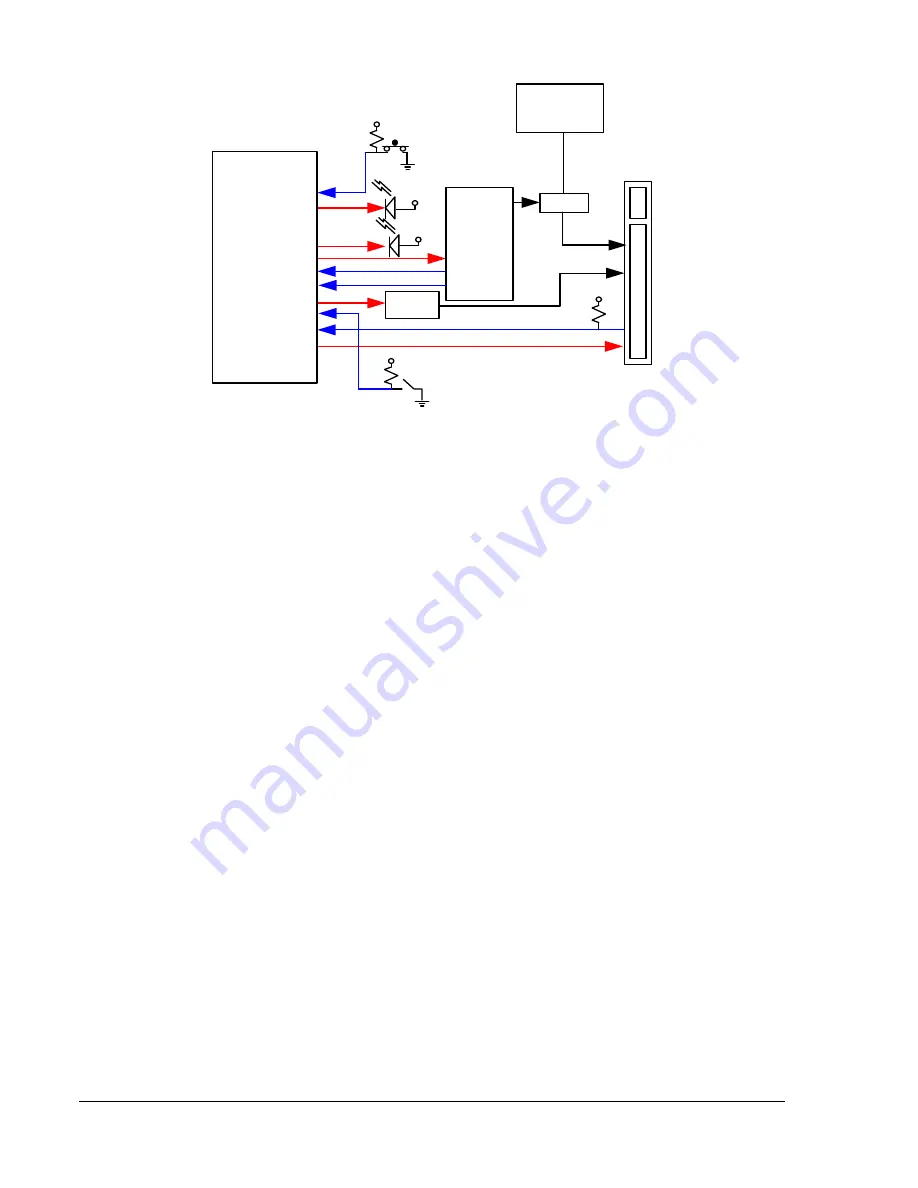
PEX 8680 Quick Start Hardware Design Guide, Version 1.1
12
© 2011 PLX Technology, Inc. All Rights Reserved.
Clkenx#
Atnledx#
Pwrledx#
Pwrenx
Perstx#
VCC
System
Power
Supply
12V, 3.3V
VCC
VCC
Buttonx#
Pwrflx#
Mrlx#
Prsntx#
VCC
VCC
Hot Plug
Controller
Pwrgdx#
Clken_a#
Atnled_a#
Pwrled_a#
Pwren_a
Perst_a#
Button_a#
Pwrflt_a#
Mrl_a#
Prsnt_a#
Pwrgood_a
PEX 8680
FETs
Clock
Buffer
Figure 13. PHPC Circuit Block Diagram
When connecting the I
2
C-Port 1 to multiple I/O expander ICs, the PEX 8680 has the option of having Hot
Plug capability on eight of its downstream Ports. The PEX 8680’s I
2
C-Port 1 is the I
2
C Master, which is
designed to interface to I/O expander ICs, to build SHPCs. One 16-I/O expander connects to I
2
C-Port 1
for a single SHPC, and one 40 I/O expander connects to the I
2
C-Port 1 for two SHPCs. Both 16-I/O
expander(s) and 40-I/O expander(s) cannot concurrently connect to the I
2
C Bus. To use 40-I/O
expander(s), a register bit within the PEX 8680 must be Set, and boot with serial EEPROM is essential.
After the PEX 8680 is powered up, the state machine inside the PEX 8680 scans the number of I/O
expander ICs connecting to the I
2
C Bus, starting from Address 000h, in ascending order. If it cannot
locate the device with Address 000h, it stops the scan process. After it locates the I/O expander IC, it
automatically assigns a valid Port Number for this SHPC.
illustrates a block diagram of the
SHPC interface to the PEX 8680. The SHPC has more signals than the PHPC. Besides the 10 Hot Plug
signals mentioned at PHPC, INTERLOCK, SLOTID[3:0], and one GPIO are added to the SHPC. Also, the
interrupt signal output, INT#, from the I/O expander, should be connected to the PEX 8680’s Interrupt
Input ball, SHPC_INT#, for the PEX 8680 to service input events at the SHPC. Because the I/O
Expander requires some time to be configured upon power-up, it is recommended that GPIO[24-42]
signals from the PEX 8680 be used for slot PERST# from the I/O Expander to provide reset to
downstream slots.











































